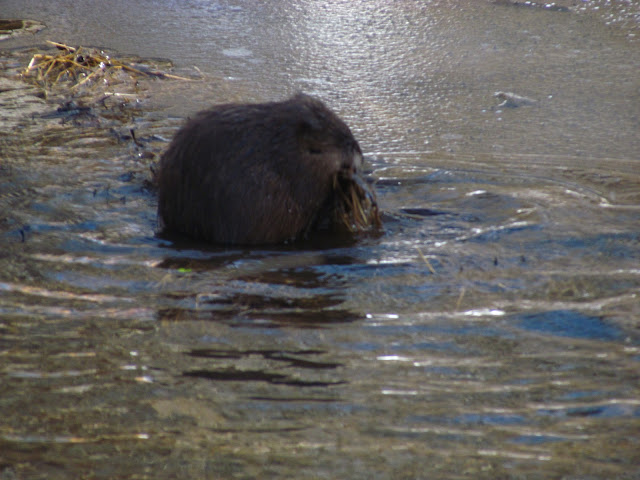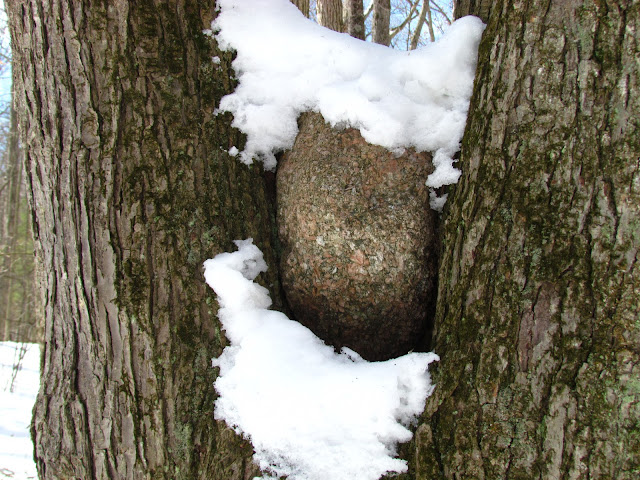 |
| All photos by Jonathan Schechter at Hawk Woods Nature Center/Oakland County, Michigan 3/17/13 |
|
|
|
|
|
The small partially frozen stream seemed lifeless.
I knew better and a flash of motion under the ice told me something was happening.
Moments later a furry brown shaped emerged in the open water.
The dawning of spring had supercharged a muskrat, a semi-aquatic mammal that wears a
rich brown waterproof layer of fur. Within seconds I was awe-struck watching this beautiful
"water rat"swim back and forth with mouth loads of emergent vegetation.
The muskrats behavior reminded me of my own behavior when gathering wild blueberries.
Instead of taking all the blueberries home I stop to eat. And instead of dragging all the
vegetation back to his small bank burrow under the ice this muskrat stopped to nibble.
Marshes, steams, shallow lakes and ponds and even drainage ditches are perfect habitat
for the well-adapted muskrat. Although they remained active all winter mostly hidden out of
sight, during the early days of spring this mostly nocturnal mammal has spurts of increased
activity and are often seen in daylight; a risky habit.
Time for one more bite of vegetation before slipping back under the ice and a quick paddle
back to the burrow. Moments later a sharp call drew my attention and I looked up noting a
red-tailed hawk circled slowly overhead. Perhaps those keen eyes in the sky had
hoped for meaty treat to celebrate the dawn of spring.
One more seasonal change paddle about, perhaps searching for a small crustacean or
sluggish frog with dreams of warmer days and a world full of fresh cattail shoots.

 RSS
RSS







































